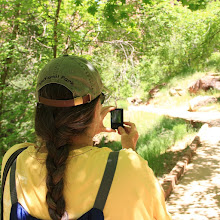Montana is vast and wide-open, with a lot of interesting sites.
Today I visited the Little Bighorn Battlefield (Custer's Last Stand). The area memorializes the U.S. Army's 7th Cavalry and the Sioux and Cheyenne in one of the Indian's last armed efforts to preserve their way of life. On June 25 and 26, 1876, 263 soldiers, including Lt. Col. George A. Custer and attached personnel of the U.S. Army, died fighting several thousand Lakota and Cheyenne warriors.
(Click on photos to enlarge.) There are grave markers where the soldiers and Indians actually fell.
There are grave markers where the soldiers and Indians actually fell.

 This is the memorial for the U.S. Soldiers.
This is the memorial for the U.S. Soldiers.
 A marker for the horses who died.
A marker for the horses who died.The stones indicate where they were found and


is also a beautiful National Cemetery.




artifacts ranging from stone tools, weapons, paintings and
instruments used, have been identified from the site.
These caves contain many ancient rock paintings (in red).

 This is a row of rifles firing. And, to the left is a fish.
This is a row of rifles firing. And, to the left is a fish. This is a big-horned sheep (a very common drawing)
This is a big-horned sheep (a very common drawing)





















